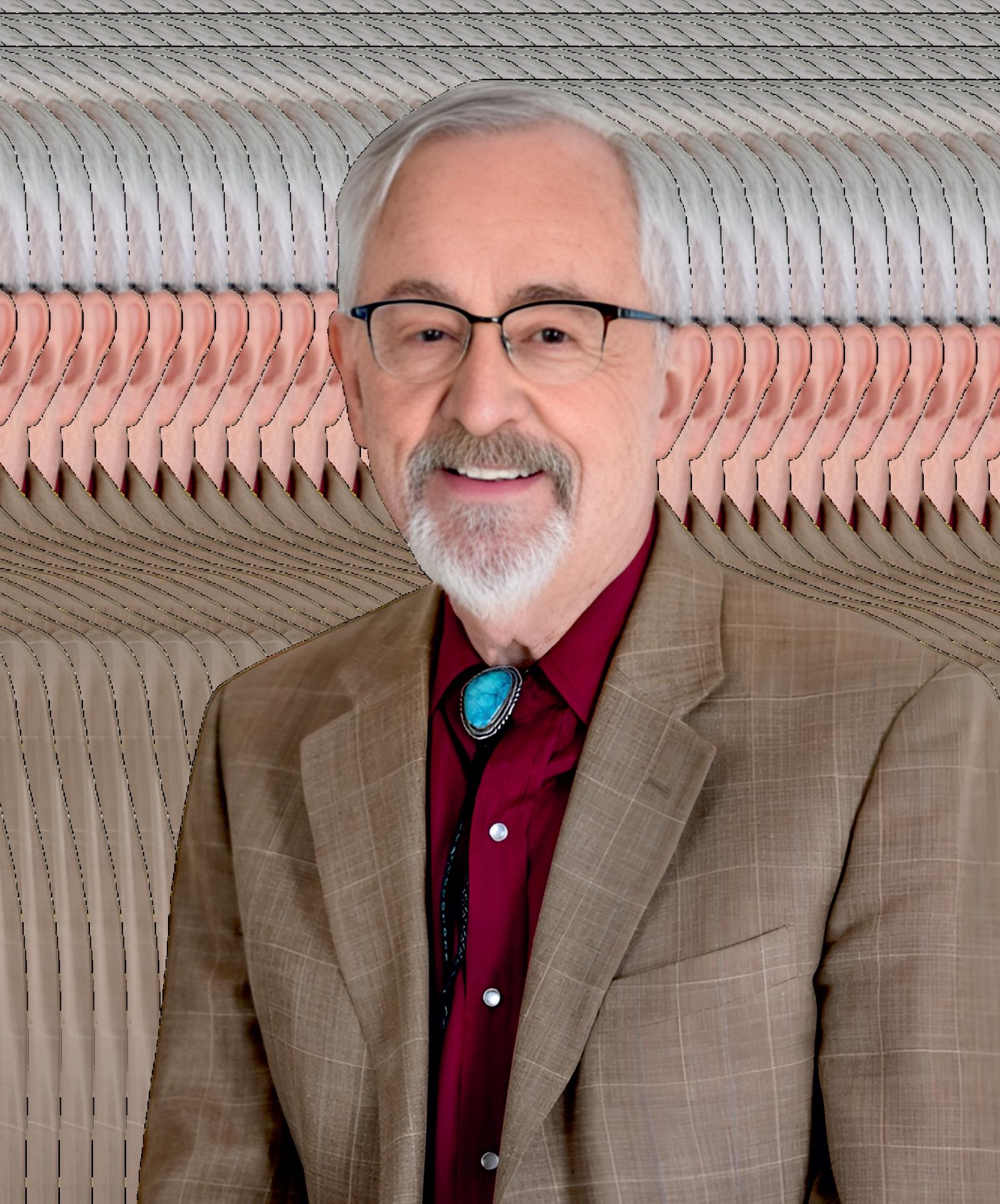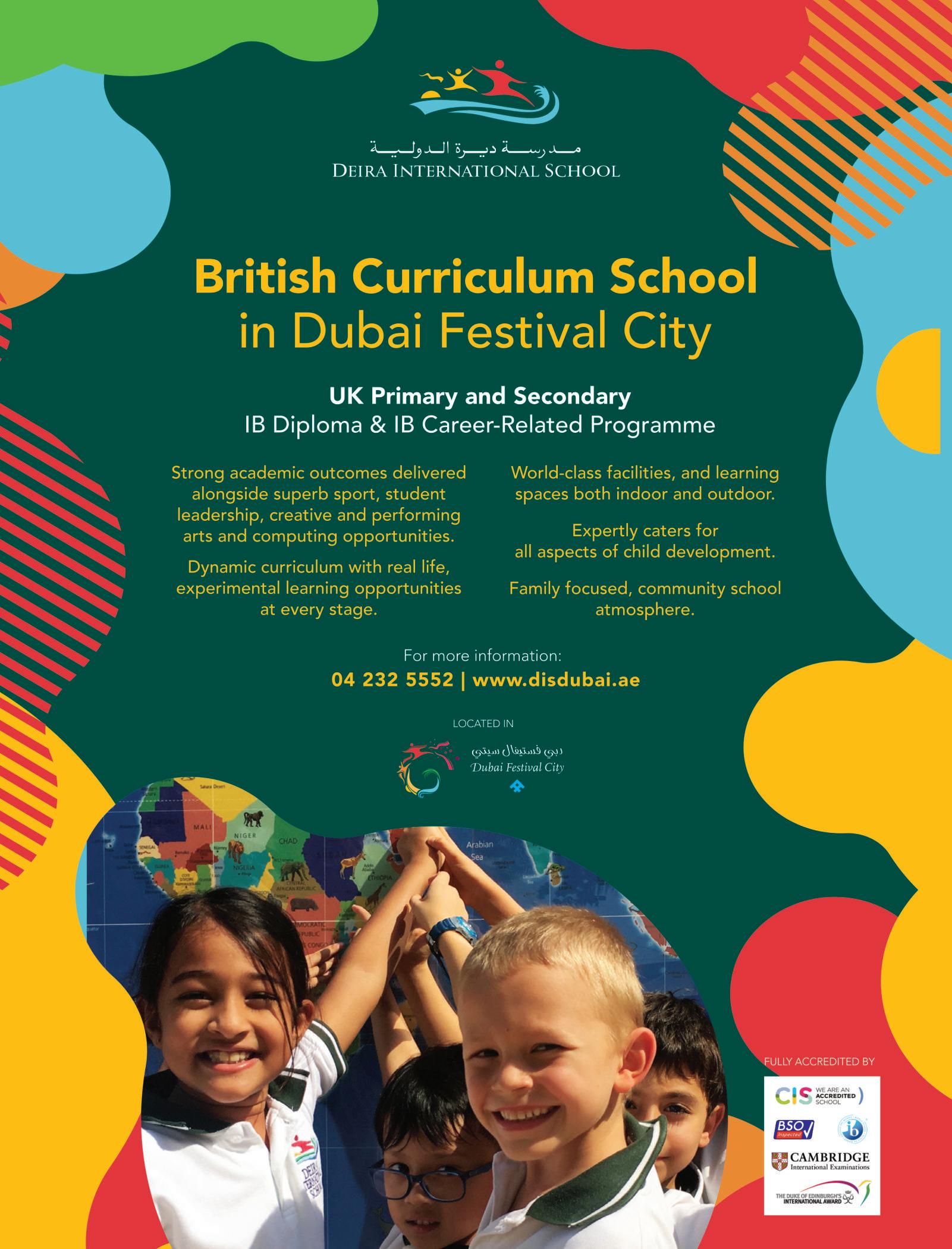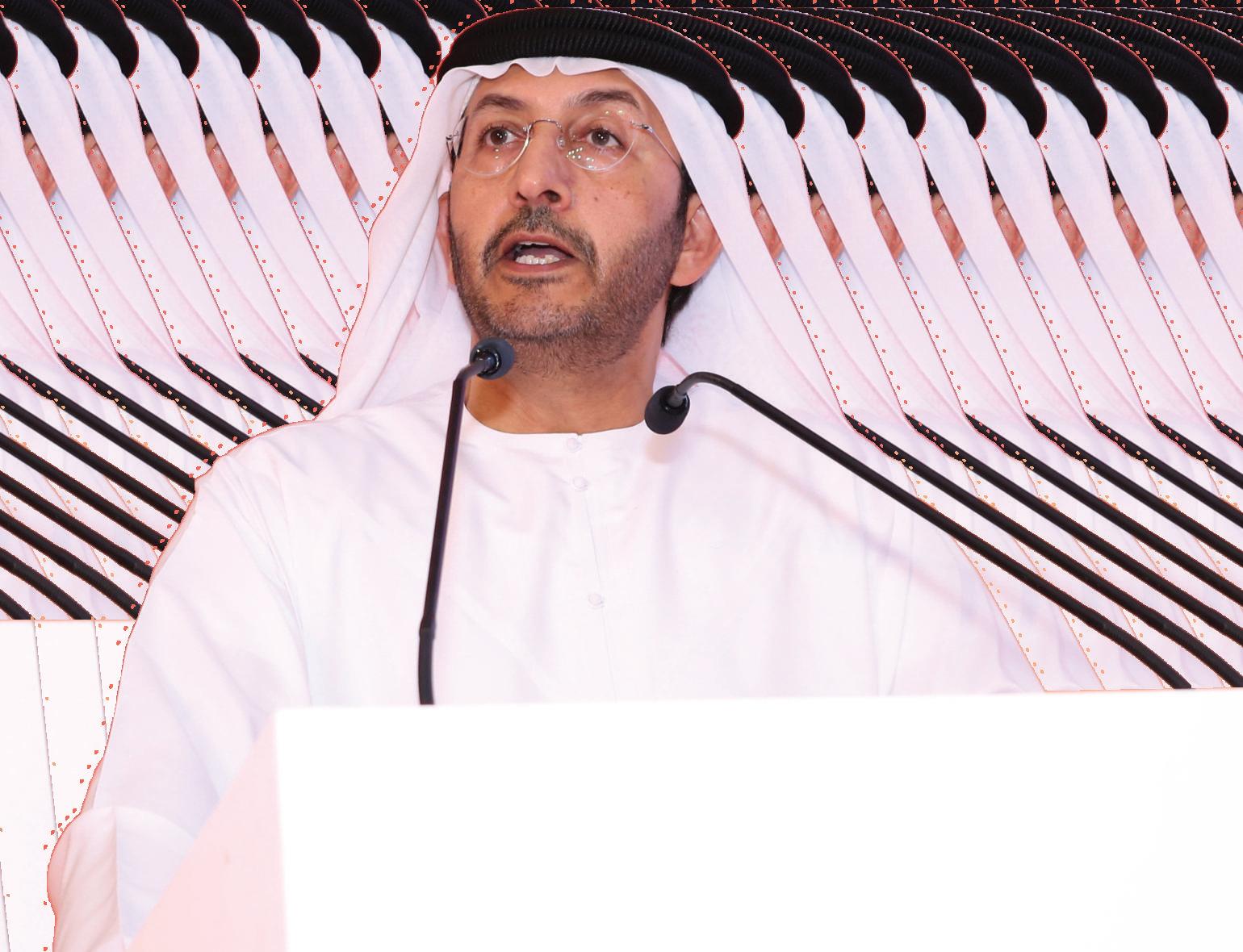












nthisEnterpriseReviewedition,wejourneyintothebrilliantand
IinquisitivemindofDr.RichardLarson,anamesynonymouswith systemsthinking,innovation,andoperationalexcellence.Known globallyforhisgroundbreakingcontributionstooperationsresearchand engineeringsystemsatMIT,heexemplifieswhatitmeanstobeatrue problemsolver.Hisworkbridgesthegapbetweentheoryandreal-world impact,transformingthewayweunderstandeverythingfromurban infrastructureandpublichealthtoeducationaltechnology.
Thisfeatureisn'tjustacelebrationofacademicaccomplishmentit'salook intothementalarchitectureofsomeonewhothrivesoncomplexityand refusestoaccept“goodenough.”Astheworldgrappleswithgrowing uncertaintyandintricatechallenges,hismethodologyremindsusthatevery problemhasasolutionifapproachedwiththerightmindset,tools,and courage.
Weaimtopresentmorethanabiographythisisanexplorationofhow operationalgeniusisshaped,howitevolves,andwhyitmatters. Throughin-depthnarratives,insightsfrompeers,andreflectionsfrom Dr.Larsonhimself,thisissueinspiresanyonewhodarestoquestionthe statusquoandsearchforanswersthatimprovelives.
Weinviteyoutoexplorethepatterns,passions,andpurposethatdrive oneofthemostinnovativemindsofourtime.LetDr.Larson’sjourneys igniteyourcuriositybecausebehindeveryproblemliestheopportunity fortransformation.
Happy Reading!


A r t i c l e s
From Clarity to Change
Innovative Problem-Solving Techniques for Every Challenge
From Observation to Action
The Importance of Analytical Thinking in Problem Solving
Merry D' Souza Editor-in-Chief
Managing Editor Bill Limbert
Assisting Editor Joe Lee


www.twitter.com/enterprisereview.com/ www.facebook.com/enterprisereview.com/
Visualizer Stewart Jonas
Art & Design Director Robin Clarck
Associate Designer Authur Watson DESIGN


Vice President Jil Kendal
Asst. Vice President Kevin Johnson
Asst. Manager Robert Hanson
Business Development Executive Thomas E.
www.enterprisereviewmedia.com
Copyright

Technical Head Andrea Jackson
Technical Specialist Mike Anderson
Technical Consultant Oliver Sutton TECHNICAL
Research Analyst Wendy J.
SEO Lead Tasha L.
July, 2025

RichardC.Larson MIT Professor




In the dynamic, constantly changing world of higher learning, there are a few whose vision, integrity, and dogged pursuit of excellence make a lasting impact on boththeirfieldsandthepeopletheytouch.Prof.RichardC Larson is such an icon—a scholar, teacher, and visionary whose impact extends far beyond the confines of MIT, reachingacrosstheglobeandtime.Hisstoryisatestamentto thepowerofcuriosity,thebeautyofgenuinementorship,and thedeepinfluenceofalifeofpurposeandintention.
Prof.Richard'stalestartsoffinthepeacefulstreetsofBayside, Queens, and the wooded, green banks of the Susquehanna River in Pennsylvania Right from childhood, he was accordedahighlevelofindependence—afreedomtoexplore, decide,andaccepttheworldwithwonder.Thisrarefreedom, initsdepthandfaith,formedthefoundationofhisintellectual and personal growth. Whether walking through woods or selectinghisowncourseofstudy,youngRichardwasearlyin learningthelessonsofself-determinationandresponsibility
The family's next moves—then to North Plainfield, New Jersey,andeventuallytoNeedham,Massachusetts—exposed him to a variety of settings and ideas. Each move was not accompanied by fear, but with a sense of adaptability and curiosity WhenhegraduatedfromhighschoolinNeedham, Prof. Richard had already absorbed the values which would govern his life: love for learning, need to serve, and a persistentsenseofwonder.
The Massachusetts Institute of Technology (MIT) would serve as the launching pad and anchor for Prof. Richard's remarkable career As a student, he came to a world of intellectual ferment and collective potential Under the guidanceofProfessorAlvinW.Drake,heestablishedhimself with alacrity, shifting from student to faculty and eventually becomingthefulcrumofacademiclifeattheinstitute.


His Ph.D. work mathematical models of urban police departments was characteristic of his style: rigorous, pertinent, and strongly rooted in practical problems. Early teaching assignments showed his native talent for using insightful conversation to draw students out, and later appointmentsinfivedifferentdepartmentsatMIThighlighted hisintellectualadaptabilityandinterdisciplinarybent.
MIT,toProf.Richard,wasnevermerelyaworkplace;itwasa working laboratory of concepts, a team of thinkers, and a bountifulfertileplacefornewideas.Hewouldcometomold the institution as much as it molded him, leaving behind a legacythatinspiresuseventoday
Throughout his distinguished career, Prof. Richard has been drivenbyasinglebelief:thattherealworthofresearchisthe potential it has to benefit society as much as it increases knowledge.Hisearlyworkinemergencyservicesystemsand urban optimization is an example Through the use of operationsresearchinthedeploymentofemergencyservices, henotonlyexpandedacademicknowledgebutalsoenhanced theefficiencyandeffectivenessoflife-savingsystems.
HistenureattheInstituteforDefenseAnalysesinArlington, Virginia, as the youngest member of the Science and TechnologyTaskForce,furtherreinforcedtheimportanceof aligningresearchwithpublicpolicyandsocietalneeds.This experiencedeepenedhisbeliefthatacademicinquiryshould address pressing real-world problems—a value that would permeatehissubsequentworkandteaching.
Prof.Richard'sresearchismarkedbyauniquecombinationof intellectualdepthandreal-worldrelevance.Hisworkinareas like queueing theory, city operations research, and STEM educationhasfoundextensiverecognition,withawardsfrom professional associations and peers (INFORMS, National
AcademyofEngineering).However,mostgratifyingforhim istoobservehowhisresearchproducesameasurableimpact onsociety.
At the heart of Prof. Richard's lasting legacy is that of a mentor. His conviction is that the most influential means of determining the future of any field is through direct interaction with students and newer scholars. A graduate research advisor to more than 30 PhD students—many of whomhavemadedistinguishedcareersoftheirown—hehas fostered an environment of ongoing conversation, helpful critique,andreciprocaldevelopment.
His mentorship goes well beyond technical training. He is invested heavily in the overall growth of his students, providing insights into emotional intelligence, career paths, andlifevalues.Thebondsheformsarebuiltontrust,respect, andamutualdesireforexcellence.Numerousgraduatesstay in close touch years after graduation, testifying to the enduringrelationshipsheestablishes.
Thismultiplierimpact—wherehismenteesbecomementors in turn—has sent a chain of positive impact throughout academia and industry.As the MIT News Office relates, his studentsareoftennaminghisinfluenceintheirownteaching and research, continuing his tradition of intellectual inquiry andethicalleadership.
Prof.Richard'sdedicationtoequityinlearningisobservable in his work outside MIT. His engagement with Notre Dame Cristo Rey High School—a work-study school for socioeconomically disadvantaged students speaks to his commitment to the redemptive power of opportunity The school'sinnovativeapproach,whichfundsmosttuition

through work-study initiatives and has a 100% college acceptancerate,alignsideallywithhisphilosophy:meetkids wheretheyare,givethemthetoolstosucceed,andhavefaith inthemtoexceedexpectations.
The experience is highly rewarding for Prof. Richard, who sees it as a way of empowering people and communities through education. His work at Notre Dame Cristo Rey reflects his wider values in education genuineness, accessibility, and an unwavering commitment to the developmentofhumanpotential.
Hiscommitmenttoeducationalfairnessringstruetocurrent researchregardingthesignificanceofaccessanddiversityin
STEM (National Science Foundation). By advocating for programsthatopendoorsforunderrepresentedstudents,Prof. Richard is contributing to creating a more equitable and innovativefuture.
Among Prof. Richard's most impactful works is the MIT BLOSSOMS project (Blended Learning Open Source Science or Math Studies), an open-source library of interactive STEM modules for the high school classroom. This initiative reflects his commitment to making advanced learning accessible, engaging, and relevant for teachers and studentsglobally.
Throughthestrengthoftheinternetandaccesstositessuchas YouTube, BLOSSOMS has democratized learning, transcending economic and geographic boundaries The program's success lies in Prof. Richard's ability to take abstract ideas and create interest-generating, bite-sized lessonswithoutcompromisingintellectualsophistication.His interest stays firmly fixed on student requirements and practicalapplication,eschewingthetemptationofephemeral trendsineducationforpermanent,pragmaticresults.
MITBLOSSOMShasbeenidentifiedasamodelforblended learning, referenced in educational studies as a best practice for technology integration and active learning (Edutopia). Themodules,developedincollaborationwitheducatorsfrom a global community, demonstrate commitment to pedagogicalexcellenceandculturalrelevance.
OneofProf.Richard'sstrongestdefiningcharacteristicsasan instructor is his capacity to make learning a source of happinessandnotachore.Hisenthusiasmiscontagious,and he is receptive to new ideas, creating a classroom environment that promotes curiosity, intellectual liberation, andanauthenticloveofexploration.
Hegiveshighestprioritytolearningapproachesthatfocuson learning how to learn, imparting competencies that extend beyond classrooms and set students up for a lifetime of personalevolution.ToProf.Richard,educationrepresentsan investmentinhumancapitaloverthelongterm.Hefrequently reflects on the fact that his most lasting contribution is not reflectedintextbooksorclassroomlectures,butinthepassion for learning that he inspires in his students—a joy that accompanies them throughout their careers and personal evolution.
This philosophy is in agreement with studies on intrinsic motivation and mastery learning (Harvard Graduate School
of Education), which emphasize the value of curiosity and engagementindevelopingdeep,long-termunderstanding.
While most educators are impressed by the latest academic fashions,Prof.Richardstandsapartwitharealistic,studentcentered philosophy. He bases his instruction on current realities, emphasizing concrete educational results over abstract popularity This honesty is what prompted the development of programs such as MITBLOSSOMS, aimed at reaching students where they are and delivering useful, usefullearningopportunities.
Hisskillinmakingdifficultideaseasywithoutwateringdown their essence is a hallmark of his methodology. Instead of being swayed by ephemeral educational trends, he stays groundedinstudentrequirementsandpracticalapplications, sohisteachingisalwaysrelevantandeffective.
For Prof. Richard, the lines between professional and personal life were never fixed. His closest friends are other members of the faculty and former students, a worldview in which academia is not just a profession, but a lifestyle.This lackofcompartmentalizationhasenabledhimtobalanceand be authentic, meeting the needs of academia while keeping sightofthehumanrelationshipsthatprovidemeaningtohis work.
The networks he forms with colleagues, students, and communities—are characterized by respect and enduring friendships. To Prof. Richard, authentic success is not only defined by accomplishments, but also by the richness of connections and the health of the communities we develop alongtheway
“ “

This integrated strategy is ever more acknowledged as a determinant of academic success and productivity (Nature), highlighting Prof Richard's foresight in exemplifying a balanced,rewardingprofessionallife.
Even in retirement, Prof. Richard still influences academia. Instead of accepting the usual "Emeritus Professor" title, he collaborated with MIT to develop the groundbreaking position of "Professor, Post-Tenure " This new honor recognizesveteranscholarswhowanttocontinuetheirwork withouttheburdenoftenure-trackobligations.Bygivingup histenure,Prof.Richardmadewayforayoungermemberof the faculty, showing his dedication to intergenerational continuityandinstitutionalrevitalization.
His aspiration is that other institutions come on board and follow this model so that senior academics' experience and wisdom continue to serve students and peers while promoting organizationaldevelopmentandinnovation.
This visionary faculty role approach has been debated in the world of academic leadership (InsideHigherEd),withProf.Richard'smodelas a template for sustainable, equitable academic communities.
MODEL-BasedThinking:EnablingRational Decision-Making
In recent years, Prof. Richard has focused on sharing his trademark approach MODELBased Thinking—beyond scholarly circles. His book, MODELTHINKING For Everyday Life, condenses decades of academic thought into actionable frameworks for making informed, rational decisions in everyday life. This way of thinking,whichcombinesdisciplinedlogicwith practical application, is representative of Prof. Richard'sownlifelongdedicationtoclosingthe gapbetweentheoryandpractice.
Through MODEL-Based Thinking, he aims to empower people way beyond the university, affirming his position as a thought leader who bringslightandelegancetothornyissues.
During his lifetime, Prof. Richard has guided morethan30PhDcandidates,severalofwhomhavebecome distinguishedfiguresinacademiaandindustry Heseestheir accomplishment as an extension of his own, gratified by the small role he played in guiding them on their paths. His old studentsarestillinclosetouchwithhim,frequentlysoliciting his advice even years after they graduated. These relationships are more than professional contacts—they are real,enduringrelationshipsestablishedonmutualrespectand development.
His mentoring extends beyond technical teaching It encompasses emotional intelligence, career advising, and exchangeoflifephilosophies.Theselevelsofguidanceform atotalmentoringclimatethatfewteacherscanprovide.
To budding scholars, Prof. Richard provides direct, genuine counsel: follow what inspires you, and stick to your intellectual passion. He encourages young scholars to find institutions that share their values as individuals and professionals, shunning places where dogma represses curiosity Hestressestheneedforself-direction,promotinga career path that comes from within and not from without. "You answer first to yourself," he frequently reminds, reiteratingthatauthenticityisthefoundationforanenriching academicexistence.

Thismessage,bornofyearsofexperience,isatoncetimeless and uncannily timely When schooling becomes more about competition and output, Prof. Richard's words remind us gentlythatpurposeandpassionmustneverbesacrificed.
Prof. Richard's life and work embody an uncommon and precious combination of intelligence, character, and inspiration From revolutionizing MIT classrooms to inspiring underrepresented students, from guiding emerging leaders to reimagining the faculty role, his impact crosses generationsanddisciplines.Aseducationcontinuesevolving tomeetnewchallenges,Prof.Richard'sphilosophyprovidesa compellingmaster plan: put the student at the center, follow genuineinquiry,andteachwithpassionandpurpose.
Hisisatestamentthatthegreatestlastinginfluenceisnotfrom awardsortitles,butfromtheliveschangedandthemindsset alight. In Prof. Richard's universe, learning is not just a system—itisavibrant,ever-changinginstrumentofpositive change.
At the core of Prof. Richard's life is a simple yet profound lesson:"Vieweachdayasagift."Thismaxim,practicedover alifetimeofacademicandpersonalsuccess,isthepulseofan extraordinary existence. His legacy is not just in research publications or institutional restructuring, but in the innumerable persons he has motivated to pursue curiosity, intention,andpracticalinnovation.
Prof.Richard'slong-lastinglegacyisatestamenttothenotion thatanindividuallife,livedwithpurposeandgenerosity,can changenotjustafieldbuttheverynatureofeducationitself.
In this complex and dynamic world of the present time, good
problem-solvingskillsaremorevaluablethanever.Ifyouarean entrepreneur, a team manager, a teacher, or a policymaker, effectiveproblem-solvingskillscanassistyouinhandlingcomplexity, recognizing new opportunities, and providing substantial results Conventionalmethods,asrelevantastheyare,tendtobeinsufficientto handle complicated problems where agility, innovativeness, and coworking are called for Innovative problem-solving processes introduce new thinking, making it possible to achieve higher-level perceptionofcircumstancesandthecreationofinnovative,powerful solutions. By transcending logic and experience, these processes promotetheinclusionofanalyticalandcreativethinking.Incorporating empathy, systems awareness, and thinking outside the box liberates individualsandorganizationsfromconventionalthinking Innovative problem-solving isn't specific to a specific field or profession; it's a broad-appearingusefulskillthatenablesanindividualtoadaptwell tochangeanduncertainty.
DesignThinking:AHuman-CenteredApproach
DesignThinkingisaproblem-solvingprocess,iterativeinnature,that involvesbeingmindfultounderstandthepeopleyou'redesigningfor It involves five steps: empathize, define, ideate, prototype, and test DesignThinkingstartswithempathy,forcingproblemsolverstocrafta understanding of users' experiences, motivations, and requirements. Placing humans first, Design Thinking makes sure solutions are not onlyfunctionalbuthighlypertinentanduser-friendlyaswell.
What is so great about Design Thinking is the way it can unleash creativity without abandoning structure It challenges discovery and experimentation without sacrificing control of the final outcome It callsforteamstoexperimentandtestearlyandoftenwithlowerriskof expensive mistakes later. In product development, healthcare innovation,orcustomerexperiencedesign,thisapproachyieldshandson-worldpragmatism.Bylinkinginnovationtorealuserrequirements, Design Thinking introduces trust and value that more conventional approachestoproblem-solvingmaybelacking




While Design Thinking concentrates on the single user, Systems Thinking considers the greater environment within whichanissueemerges Thisisneededtoresolvecomplexand connected issues like environmental sustainability, organizational performance, or social equality Systems Thinkingistheobservationofhowthedifferentelementsofa systemactupononeanother,payingattentiontopatterns,and beingawareofthecause-and-effectrelationshipsthatproduce resultsoveraperiodoftime
Employing visual aids such as system maps or causal loop diagrams,SystemsThinkingenablesgroupstofindrootcauses insteadofsymptomatictreatment Thismindsethastheability to expose leverage points those positions where specific interventionscancreateradicalchange.Forinstance,insteadof staffingsimplytodecreasedelays,ahospitalcanuseSystems Thinkingtofindouthowmisinformationorwasteinworkflow is building choke points Solutions are made strategic and sustainable by this method By enabling decision-makers to view the complete nature of a problem, Systems Thinking favorslong-termthinkingoverquickestfixes
Lateral Thinking is a groundbreaking method that challenges individuals to think of solutions in new and unconventional ways MadefamousbyEdwarddeBono,thismethodislightyears away from vertical thinking, which takes orderly and linear approaches. Lateral Thinking provokes assumptions, employs provocation to generate novel ideas, and sometimes employs methods such as random word association or analogicalthinkingtopursuenewsolutions.Thebestfeatureof
LateralThinkingisthatitdoesnotjustattacktheproblemitself, butreformit.
Bychangingeitherthequestionsbeingaskedortheperception ofthechallenge,possibilitiesaremadeavailable Anexample wouldbeabusinesstryingtosellmoreofitscommodityandjust reforming the problem by looking into greater customer engagement instead. This shift can give rise to new concepts such as the development of a community for the product or offering additional services. Lateral Thinking is most productiveonceconventionalavenueshavebeendepletedanda break-through is needed It creates a culture of inquiring, tolerance, and persistence which are all qualities that are imperativeintoday'sworldofinnovation
Problem-solvingcreativelyisgreaterthanacollectionoftools or methods It is a mindset that encourages experimenting, valuesdiverseopinion,andviewschallengeasanopportunity for development The addition of Design Thinking, Systems Thinking,andLateralThinkingtoyourproblem-solvingtoolkit can actually help you better deal with complicated situations They force you to consider different perspectives, loop early, and develop solutions that are innovative but viable. Organizations that allow for such an attitude are rewarded handsomely with increased agility, greater engagement, and improvedperformance Whenteamsfeelcomfortableenough to push the boundaries, to experiment out of failure, and to constantlyadjust,theywillbemorelikelytodevelopsolutions that stand the test of time. Whether in medicine or manufacturing, an expert or an intern, using cutting-edge problem-solving methods will make you empowered to meet today'schallengeswithconfidenceandcreativity.















In a world filled with complex challenges, from personal
decisions to business dilemmas, one skill continues to proveindispensable analyticalthinking Whetheryou're navigating workplace dynamics, launching a product, or just figuringoutyournextbigmove,analyticalthinkingallowsyou toapproachproblemswithclarity,structure,andlogic.
At its core, analytical thinking is the ability to break down informationintosmallerparts,examinerelationshipsbetween them, and draw reasoned conclusions It's not just about intelligence it's about how you process information While emotional or instinctive responses can guide us in certain moments, analytical thinking ensures that decisions are rootedinlogic,evidence,andunderstanding.
Imagine facing a problem that seems overwhelming. An analyticalthinkerwon’tbeparalyzedbyitssizeorcomplexity Instead, they methodically explore each component, asking questionslike,“Whatisactuallyhappeninghere?”or“Where might this have started?” This mindset transforms confusion intoclarityandchaosintostructure.
When a problem arises be it in a professional setting or personal life how we approach it often determines how effectively it gets resolved Analytical thinking supports a systematic approach to problem solving It starts with understandingtheproblemthoroughly.Withoutrushingtofind solutions, an analytical thinker collects all the relevant information, considers the context, and starts identifying patternsorinconsistencies.
Let’ssayacompanyisexperiencingasuddendropincustomer engagement. Rather than guessing the cause or reacting emotionally, an analytical approach would involve studying user data, reviewing customer feedback, checking recent changestoproductsorservices,andcomparingcurrentmetrics withpastperformance.

Through such exploration, the true source of the problem becomesevident—perhapsabuginthelatestappupdateora shiftinuserexpectations.
This method of problem solving goes beyond surface-level fixes Analytical thinking ensures the root cause is addressed, notjustthesymptoms Ithelpsinevaluatingmultiplesolutions, comparing their potential impacts, and selecting the one that bestalignswithlong-termgoals.
Analytical thinking isn’t limited to boardrooms or scientific labs it’s everywhere A teacher analyzing student performancetotailorlessonplansisusinganalyticalthinking So is a chef refining a recipe based on customer reviews. Whether you're deciding on a career change, planning your finances, or troubleshooting a tech issue at home, analytical thinkingplaysacentralrole.
In professional life, this skill is especially prized Employers seek individuals who can not only identify problems but also present logical, data-backed solutions In industries such as healthcare, engineering, finance, and technology, analytical thinkersoftenleadinnovationanddriveresults.
Evenincreativefieldslikewritingordesign,analyticalthinking has its place For example, a content strategist may examine audienceengagementdatatounderstandwhichtopicsresonate most,thenadjusttheeditorialcalendaraccordingly Creativity thriveswhenpairedwithanalyticalinsights.
Thegoodnewsisthatanalyticalthinkingcanbedeveloped It’s not a fixed trait it’s a muscle that grows stronger with use Developing this skill starts with cultivating curiosity Asking "why" and "how" in everyday situations opens the door to deeperthinking.
Another way to sharpen analytical thinking is by reading regularly especially non-fiction, investigative journalism, or case studies These materials introduce various perspectives and encourage a more layered understanding of issues
Reflectingonyourowndecisionsandanalyzingtheiroutcomes isalsovaluable.Whatwentright?Whatcouldhavebeendone differently? Over time, this habit trains your brain to see patternsandanticipateconsequences.
Engaginginactivitieslikechess,puzzles,orstrategygamesis more than entertainment they challenge you to think ahead,
weighoutcomes,andadjuststrategies.Similarly,learningbasic datainterpretationorstatisticscanhelpyoudrawinsightsfrom information, a vital skill in today’s data-saturated environment.
While these terms are often used interchangeably, they’re not identical.Analyticalthinkingfocusesonbreakingthingsdown andunderstandingtheirstructure.Criticalthinking,ontheother hand, involves evaluating information to make judgments They complement each other beautifully For example, if analytical thinking helps you understand all aspects of a situation,criticalthinkinghelpsyoudecidethebestcourseof action.
Takethecaseofhiringanewteammember.Analyticalthinking helps you assess resumes, review test scores, and compare experiences Criticalthinkingthenhelpsyoujudgewhomight bethebestculturalfitandlong-termassettoyourteam
Weliveinaneraofinformationoverload.Newsupdates,social media,notifications,reports allcompeteforourattention.It’s easy to make snap decisions or feel overwhelmed. But analyticalthinkingallowsustopause,cutthroughthenoise,and focusonwhatreallymatters
Inbusiness,thisskillcanbethedifferencebetweensuccess andfailure.Ineverydaylife,itempowersustosolve problemsconfidentlyandmakechoicesthatalignwithour valuesandgoals.Moreover,asautomationandAIcontinue tohandleroutinetasks,humanstrengthslikeanalytical reasoningwillonlygrowinimportance.
Analyticalthinkingisnotjustaprofessional advantage—it’salifeskill.Itequipsustounderstand challengesdeeply,findbettersolutions,andmakesound decisions.Whilesomepeoplemayhaveanaturalknackfor it,everyonecanstrengthenthisabilitywithpractice, patience,andcuriosity
Inaworldwhereproblemsarerarelyblackandwhite, analyticalthinkingbringsshadesofclarity.Sothenexttime youfaceadecision,stepback,thinkitthrough,andletyour analyticalsideleadtheway.You’lllikelyfindnotjust answers—butbetterones.
| July, 2025 | www.enterprisereviewmedia.com



www.enterprisereviewmedia.com
